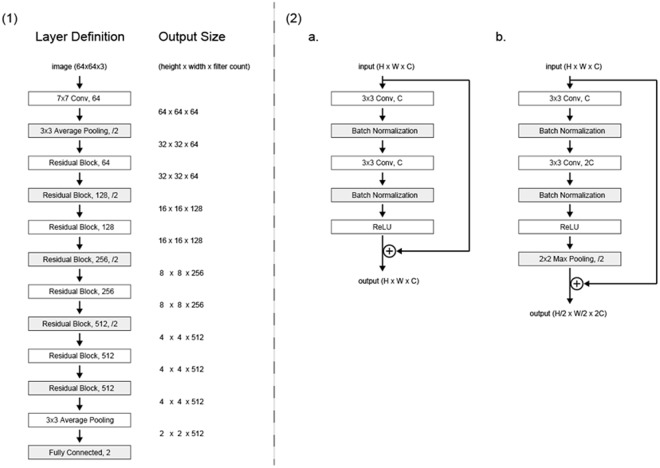Figure 1.
The deep residual learning algorithm to diagnose glaucoma using fundus photography. In ResNet, after two instances of convolution and batch normalization, the input is added to the raw output. (a) Shows the scheme of the classifier. The network is highly influenced by ResNet, which has skipping connections in each residual block to promote efficient training of deeper layers. This network has 18 convolutional layers in total. (b) shows the detailed explanation of residual blocks. In the case of (a), the shape of input and output will be the same. On the other hand, (b) doubles the number of channels with the second convolution, while width and height are halved with max pooling. When adding the input to output, half of the filters added are zero-padded so that the shapes match. ResNet: residual network.

